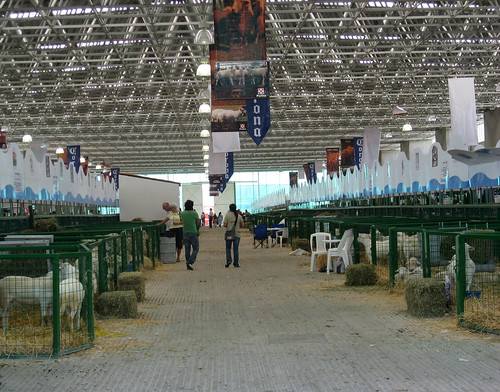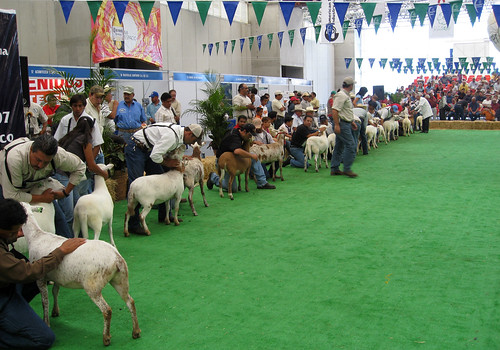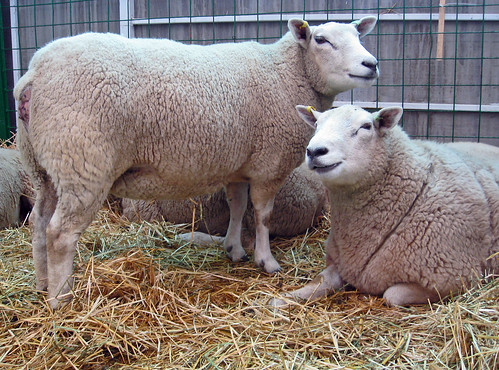July 2007 -- I was fortunate enough to attend the World Sheep Congress in Queretaro, Mexico, in 2007. My friend and colleague Dee Dee A. was my travel companion. The Congress drew over 700 participants from 18 countries. There were probably about 20 Americans in attendance, including a few speakers (Jim Morgan from Katahdin Hair Sheep International) and many I knew. The Congress included a scientific program and day of farm tours. The last few days featured a multi-breed sheep show and trade show.
The most numerous breed in the show was probably the Pelibüey. The Pelibüey is a Cuban breed. It is likely derived from the West African and related to the Barbados Blackbelly. The breed looks very similar to Katahdins of the same color, though Katahdins are more robust. There was speculation that Pelibüeys had been crossed with Katahdins to improve their size for the show ring (sound familiar?). We do not have the Pelibüey in the US. While it has many valuable attributes, I'm not sure if offers anything the US sheep industry doesn't already have. It is popular in the Caribbean and parts of Mexico. I had seen the breed in my travels to the Caribbean.
The Katahdin show was also large in size (and quality). Katahdins were (are) becoming popular in Mexico. The Katahdin judge was an American, Wes Limesand. Many of the Americans in attendance were Katahdin breeders like myself. Wes was shepherd at NDSU.
Class of Katahdin ewes
Most of the rest of the sheep at the show were breeds common to the US: Barbados Blackbelly, Dorper, Dorset, East Friesian, Hampshire, Suffolk, Texel, Romanov, and Rambouillet. There were a few breeds that I had never seen before (except in pictures), such as Charollais and Damara. I didn't get pictures of all of the breeds.



























No comments:
Post a Comment